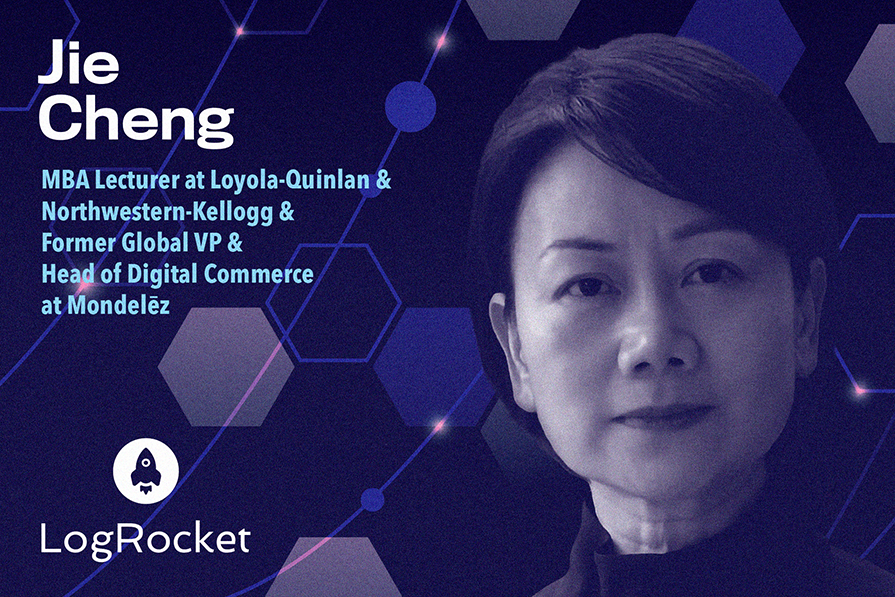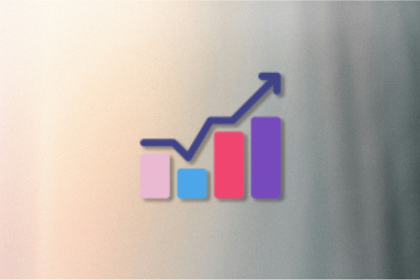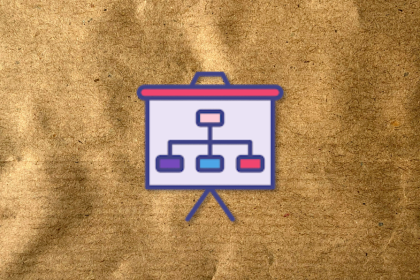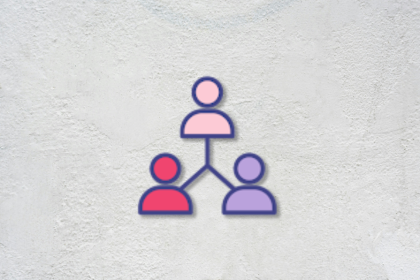Jie Cheng is former Global VP & Head of Digital Commerce at Mondelēz International. She began her career as a financial analyst at Conair Corporation, where she later built Conair’s Internet marketing department from the ground up. Jie then became the first Digital hire at Danone US before transitioning to digital marketing at The Hershey Company. Before her most recent position at Mondelēz, she served as NA Head of eCommerce & DTC, Personal Health at Phillips and Head of Digital & eCommerce for Campbell Snacks at Campbell Soup Company. Passionate about education, she now teaches MBA classes at Loyola University Chicago’s Quinlan School of Business and Northwestern University’s Kellogg School of Management.

In our conversation, Jie talks about how she brought an ecommerce and digital mindset to various organizations, including Mondelēz and Conair. She shares lessons from her roles, including to remain committed to lifelong learning and to always go for stretch roles during your career. She also discusses what it means to “celebrate the red” on projects and embrace the opportunity to grow.
I joined Mondelēz in July 2020 with two very clear goals: to capture the channel shift when grocery shopping moved online during the pandemic, and to take the business to the next level. Mondelēz has an ambition to be the global leader in digital commerce for the snacking business globally. We have very powerful brands and category leadership.
To “take the business to the next level,” we launched Digital Commerce Vision 2030, which said that by 2030, we want to be the indisputable number one. We set an ambitious revenue target and online market share goal. Then we took a future-back approach to benchmark our targets per year leading up to that. And we developed a clear roadmap with “where to play” and “how to win” action plans to achieve the ambition.
When I joined, there were only four markets with a digital commerce business, even though Mondelēz plays in over 150 countries. We needed to identify which markets to go after and which channels to focus on. We also had to define what commerce means to Mondelēz — it’s not just the D2C. We also sell through Walmart, Amazon, Tesco, and small delivery services like DoorDash and Instacart.
The first step was to lay out a clear roadmap with key milestones to hit. We also had to figure out the resource requirements, such as investment needs, headcount, and technical capabilities.
Once we had that stretch goal, we also needed to get our leadership aligned. This was critical because leadership needs to commit to supporting you — all the way up to the board of directors. Before Mondelēz, I never presented to a board, which was a personal goal of mine as well. I continued to do so every year from then on to show progress and continue to gain their support.
The key is to have top leadership on the same page and support you with commitment. Equally important to that is having support from the whole organization. Ecommerce is not just a sales channel, it’s also a marketing media insights platform and a team sport. You need support from the supply chain, legal, and more. It’s a marketing and sales co-play, and having cross-functional alignment across business units is critical.
Retailers have now become media powerhouses, which is why we need to be cross-functional and have teamwork as part of our DNA. At Mondelēz, to make this vision tangible, the first step after committing to the vision is setting a foundation — people, process, and technology-based tools. They all need to collide and collaborate.
Take marketing, for example. That’s a key function, and consumer product marketers need to have a general manager mindset as well. They need to look at things holistically. Before I joined the company, the process had never had digital commerce needs captured. It was always an afterthought, so we made it as a part of the marketing creative briefing process.
Another example was developing a shipping-friendly process. We call it ePPA, or ecommerce-friendly price pack architecture, to meet shoppers’ needs on Amazon. As snack orders usually get shipped to your home, but there are a lot of nuances for that ship-to-home product. It needs to arrive intact so the Oreo cookies aren’t broken. That means having shipping-friendly packaging.
The other aspect is launching on ecommerce. I preached this a lot during my time at Mondelēz — you need to think about ecommerce as a channel for launching new products. The beauty is that there’s so much first-hand transaction data you can access. You can see whether a product resonates with consumers or not, and the purchase behavior around the item. That gives a very good understanding of a new product and how it’ll perform before you launch to mass retail.
We looked at two sets of data. The first was financial data, like sales dollars and volume. To understand whether we were winning or not, we looked at market share data. Gaining share means we’re outperforming the category growth. That’s a true indicator of success.
Also, I worked in finance for a couple of years, so my P&L sense comes handy when managing digital commerce business. Digital commerce can be margin-diluted, so we were very vigilant on that and making sure our products are profitable and in line with the overall company’s profitability profile.
The second set of data was operation data. This is to make sure the work was truly excellent. Execution discipline is so important. I always say the difference between the leader and the laggard is how well you’re executing. We put a lot of discipline, and brought the Kaizen mentality into our work. The Kaizen mindset is all about continuous improvement. We’d look at our digital shelf measurement tool and see how our content and products were ranking. Every year, we had a different set of metrics for revenue targets, and I was so proud of the team for continuing to reach higher.
One quote during a leadership session at Mondelēz really stuck out to me. Our scorecards would always show green because we were always hitting 90 percent or above in our targets. All of a sudden, in the new year, the standards were raised, so the scorecards turned red. And of course, many teams didn’t like to see their scores “in red.”
The quote I learned and continued to use was to “celebrate the red, question the green.” When you have red, it means there’s an opportunity to grow. You have room for improvement. If all are green, you should question whether your bar is set too low. It’s important to make people feel comfortable embracing those growth opportunities as well.
I consider myself a veteran in space, but I’ll never consider myself an expert. This industry is constantly changing. I was a financial analyst at Conair, where I started in Toronto. Then they moved me to the HQ in Stamford, Connecticut, in 2005. That was a pivotal year for me. I was presented with an opportunity to figure out how to sell our hairdryer product online, which was a new concept. Amazon was hardly even established then.
Our CMO was very forward-thinking and approached me with the opportunity. I almost turned it down because I thought that it was more of a developer job, but the CMO said to me, “Listen, there are not many people in the market who can do this. We should give it to someone who at least knows the Conair business and can learn by doing.”
That’s how I jumped from finance to ecommerce — from learning by doing and figuring out how to launch a D2C business. I gained a lot of hands-on experience in search marketing on Google, and I even had an email marketing certificate to run email marketing. Later, when Facebook launched, Conair was one of the first companies to create a business Facebook page. And when YouTube launched, we were one of the very first tutorials on how to style your hair with a Conair curling iron, for example.
I spent six years in that role and built something from the ground up. It set a foundation for the team, and I later moved to Danone. The biggest project I did there was to launch Oikos Greek yogurt. I was part of the brand team, but my job was to support the launch with digital platforms. We had influencer marketing, social media, search marketing, and even Super Bowl ads. It was very successful. It was a great experience in using digital as a storytelling platform and as a part of an integrated campaign.
My latest roles were at Hershey’s, Campbell’s Soup, and Mondelēz, which are global. The biggest takeaways from those experiences were how to adapt a global strategy and localize it. I learned to lead in ambiguity because these places are always changing. It’s never clear, and it’s always uncertain. It was crucial for me to stay scrappy, test, and learn.
It’s super important to have a lifelong learning mindset. I always use this quote from Alvin Toffler that says, “The illiterate of the 21st century will not be those who cannot read or write, but those who cannot learn, unlearn, and relearn.”
Also, I took a lot of stretch roles, which I encourage. Do things that make you uncomfortable, and things that will stretch you so you can learn new things. My mentor, Christiana Shi, wrote a book with her co-author, Grace Puma, called Career Forward. One of the things she mentioned was to think of yourself as a growth stock. You should continue investing in yourself and learning, and trying to make a positive, meaningful impact in everything you try to do.
Lastly, in the world of generative AI, soft skills become hard skills. Emotional intelligence is something a machine cannot do. Storytelling capabilities and collaboration are team sports, just like digital commerce. Those abilities become even more important in this type of work. Continue to hone and cultivate those soft skills as much as you can.
AI will definitely continue to evolve, and the key is, as a professional or in your personal life, AI is a tool to help you augment your productivity. You can use AI to augment your productivity for brainstorming and ideation.
In terms of the brand, I am impressed by how Mondelēz was always trying to stay at the forefront of AI development. The company came up with really on-brand, high-quality commercials for Chips Ahoy with the help of AI, and it proved that this technology can augment creative production and do personalization at scale.
Also for retail, the line between digital and physical are blurring even further. From last-mile delivery to smart stores, the future is fluid and integrated.
Lastly, Gen Z is growing up with this advanced technology. This generation also has more emphasis on sustainability and purpose-driven brands. I predict that those will become even more important as Gen Z enters and moves up in the workforce.

LogRocket identifies friction points in the user experience so you can make informed decisions about product and design changes that must happen to hit your goals.
With LogRocket, you can understand the scope of the issues affecting your product and prioritize the changes that need to be made. LogRocket simplifies workflows by allowing Engineering, Product, UX, and Design teams to work from the same data as you, eliminating any confusion about what needs to be done.
Get your teams on the same page — try LogRocket today.

A practical guide for PMs who want to stop being bottlenecks, delegate smarter, and lead teams effectively with a clear ownership framework.

Stop letting unreliable data block features. Treat data as inventory to track quality, ownership, and ship with confidence.

Learn why slide decks slow teams down and explore better tools like whiteboards, PRDs, and prototypes to improve collaboration and alignment.

AI PM roles are evolving fast. Learn the five types of AI PMs, the skills they need, and how they shape AI products across industries.